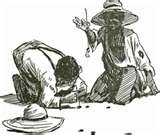Page Contents
Never Enough in Some Lives
Never enough! How many times have we heard that exclamation applied to some person or group of persons to describe their attitude toward life and possessions? It may refer to homes, travel, money, real estate, boyfriends or girlfriends – you name it, the possibilities sometime seem endless. Never enough, although the term appears demeaning at first glance, actually describes a very real, normal, attitude as long as the boundaries are controlled to the extent that it doesn’t become a perversion of our lives. The term is very often applied to the multi-millionaires, and especially to the multi-billionaires that exist today. But, upon objective examination of their lives, it is found that many of them lead pretty restrained lives. And they put their bountiful resources to good use in helping others through charitable works and in promoting other projects beneficial to society. There are several models of human behavior that attempt to describe human behavior in the many modes of occurrence.
Enough Needs Hierarchy Theory of Human Behavior
A “need-hierarchy” concept of human behavior was developed by Abraham Maslow, and is described in a book, Organization and Management, A Systems and Contingency Approach, by Fremont E. Kast and James E. Rosenzweig. This concept offered an alternative to viewing human motivation as a group or series of relatively separate and distinct drives. The concept viewed higher-order needs becoming important only after certain “lower” needs were satisfied to some personally acceptable level.
These needs, progressing upward to a higher order, as described by Maslow, were: Physiological (hunger, thirst, the activity-sleep cycle, sex, and evacuation), Security (protection against danger, threat, and deprivation), Social (associations with others, belonging to groups, and giving and receiving friendship and affection), Esteem (self-respect, respect of others, and ego or status needs), and Self-Actualization (achieving the potential within oneself, maximum self-development, creativity, and self-expression). Each of us can measure our own lives and needs against this concept to determine or measure the relative importance of each of these need-levels to our own situation and how it has influenced our lives. However, please note that this is only one of several theories of how we react to the forces that impact our lives at home, at work, and in society at large.
The needs hierarchy may also be viewed as a “value” structure. As one moves up or down the structure, changing values are reflected in the elements of each level. In the language of economics theory, the various levels and their elements have a changing “utility” to us. This change in utility will likely be reflected in our personal and family budgets and the way we allocate our resources. There is substantial variation within each level for the individual, based on the individual’s perceptions, experiences, goals, and other influences. Broad participation in our blogs should enhance the examination of our own system of values and influence those of other participants.
Home Influences
Home – modest or elaborate, owned or rented, or perhaps only a vision – this concept or thought is a pervasive influence on society, and is continuously evolving. Planning and programs for housing the nation are debated and implemented from the chambers of Federal Government down through State and Local governments to the grass-roots level of the individual and the local real estate industry. Influencing this activity is a large and influential industry of realtors, lawyers, banks, builders, material suppliers, landowners and developers, government officials, carpenters, brick layers, plumbers, painters, and many others unmentioned. All these influences must be considered in decisions involving the family’s financial health – both current and future. Their business and political activities extract increasingly larger portions of the resources of the family. And, it has been recognized that home ownership contributes the major component of wealth to the estate of the majority of United States household.
Your home may take many forms. It may be a new one, or one previously owned by someone else, or it may be one you currently own but are painting, remodeling, adding to, or renovating. In each case your “home image” is evolving toward expectations of an improved image as described above in “Needs Hierarchy Theory of Human Behavior.” These image-improving activities, in fact, are part of the process that transforms a house into a home. Of course, as we all recognize, this recipe for a home also involves many other ingredients of family and home life; all in quest of satisfaction of insatiable human desires.
Home Ownership
Consider the words home, family, and affinity. What do they mean to you? Your home! Does this term have special meaning for you? Can you describe it? Home, family and affinity, all three, have connotations of warmth, attraction, attachment, and closeness – a retreat from the rest of the world, a haven, a place of safety, a refuge. Webster’s New World Thesaurus provides one description of home as “The whole complex associated with domestic life.” Home ownership and home estate are significant components of the net worth and emotional health of stable family units. Home estate has a much broader connotation than home ownership in that home estate includes all that comprises your home resources.
Whatever your interest or need – community issues; family issues and well-being; religion and church; education; home buying; home selling; home appraisal; home inspection; mortgages; insurance; home furnishings; maintenance; home construction; environmental issues such as radon gas and lead; financial services and issues; investments; real estate; medical needs; clothing; automobiles; shopping; consumer issues – we want, through the resources of this website, to explore and provide direction to sources of useful information and services that will assist you in obtaining solutions to your personal and family problems, wants, and needs. This exploration of mutual needs, attitudes, wants, and solutions, can be enhanced through participation in our blogs. Offer and receive information and assistance to and from blog participants. Discover information and attitudes you are not aware of, and contribute to the knowledge of others.


